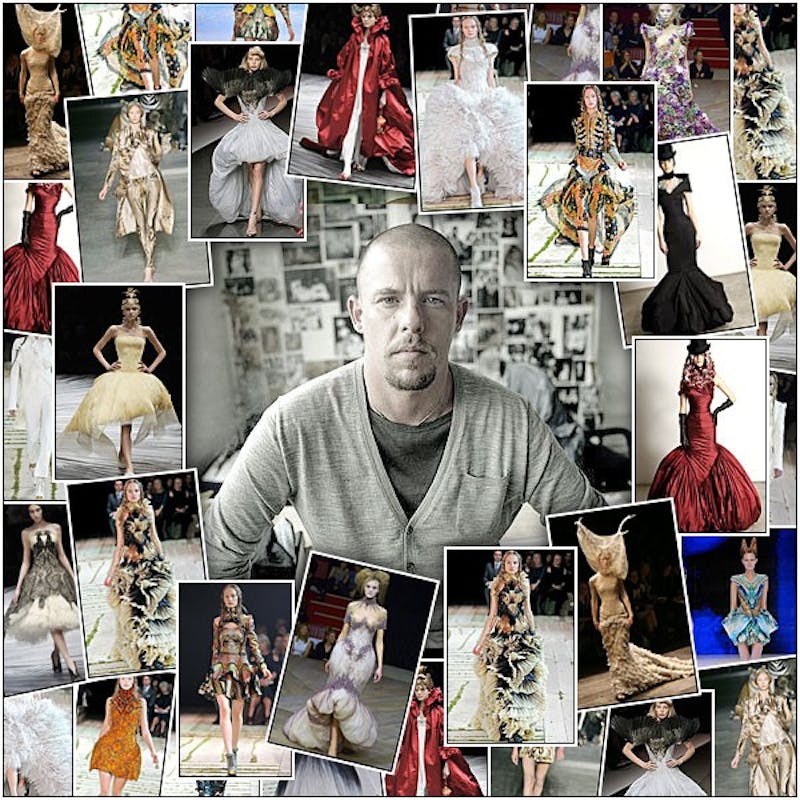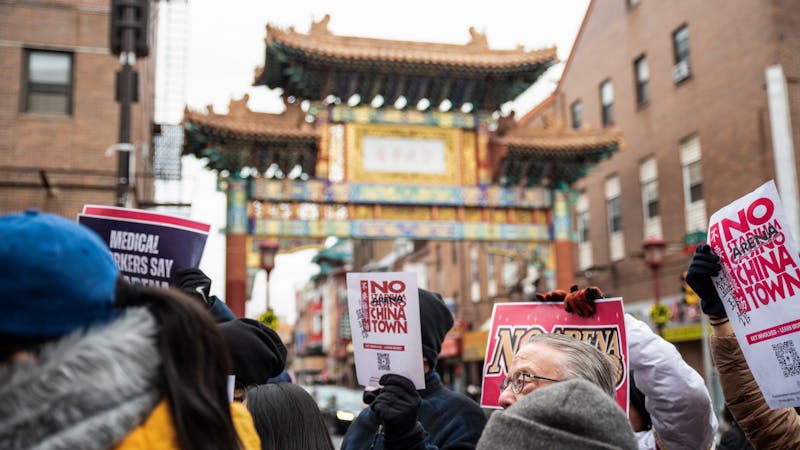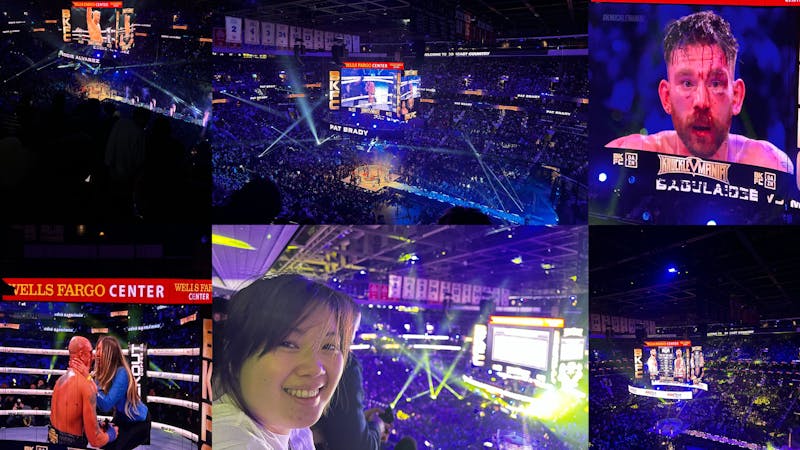It’s below 20 degrees and my toes are freezing. Grey, the small guard kitty, sits outside the Fletcher Street Urban Riding Club stables of Strawberry Mansion, next to a bag of carrots dropped off that morning for the horses. There’s hay on the ground, horses shuffling in their stalls, and Jake, the club’s new pony–sized puppy, is bolting around the property.
FSURC was opened just over 20 years ago to provide an alternative outdoor activity to instill discipline, teach life skills, and promote academic achievement in city youth. Ellis Ferrell, “aka El–Dog, aka the president” of FSURC, came to Philadelphia in the 1940s as a teen from Florida looking to finish school and found himself entranced by the horses roaming the city streets. He’d grown up around them in the South, but since “horses weren’t something [they] could eat,” his aunt refused to buy one. Instead, he and his cousins passed their time taming and riding bulls. Still, horses held a special place in his heart.
When his life here in Philly started, horses were still a commonly used work animal by Black laborers in the city. Many such laborers migrated to Philly during the Great Migration and knew their way around horses long before they arrived. The stallions would pull around carts coming to pick up coal ashes that were used to heat Strawberry Mansion homes in the wintertime. But when cars started to replace the creatures, Black cowboys across the city decided to keep them.
The culture spread from there, with stables popping up across the city. Be it Northeast, North, South, or West, it was hard to find an area without seeing Black men on saddles. Cowboy hats on top and whatever streetwear they wanted below, they created a blend between the Southern aesthetics of their ancestors and the modern look of North Philly, including by donning Philadelphia Eagles jerseys during the recent Super Bowl celebrations.
But, according to El–Dog, who is one of the last elders in the city to be a part of the scene at its peak, a lot has changed since then. They used to ride across Philly in parades from Kensington to the old stables at 63rd Street and Cobbs Creek Parkway into Darby for jam–packed horse shows. “It was a real rodeo man, it was great,” he says, “but now nobody rides. They’re all working. … They ride, but they’re not interested in horse culture. … They don’t own them; they all rent from somebody else. You see those horses over there? I raised them. I own them.”
At auctions across the region, El–Dog tries to buy and help the sickest of horses, guided by a powerful love in his heart for them and any other animal that comes his way—a sentiment that drove him to found FSURC.
The club has struggled to keep its horses, though. Four years after losing their original stables in Brewerytown to eminent domain—which is when the government takes and repurposes private property for public use—and moving to the now gone Fletcher Street lot, the city shut down their stables, and the Society for the Prevention of Cruelty to Animals conducted a massive raid sparked by an anonymous tip, taking away all of FSURC’s animals.
The club got the animals back soon after when the animals were all found to be healthy, but El–Dog says they’ve dealt with the SPCA a lot over the years. Disinterest in owning horses grew from there. “They just got tired of the SPCA,” says El–Dog. Forced removal after forced removal, relocation after relocation—many felt exhausted.
In the era of the automobile, the city has tried to keep horses out of cities. When FSURC riders take their horses around Fairmount Park, where their new and still unfinished stables—15 months after their grand opening with Philadelphia Parks & Recreation—are meant to be, people come up to them asking where they rented them. “We don’t rent them, we own them,” El–Dog remarks.
The club has received a lot of media attention over the years—including from the 2020 film Concrete Cowboy, in which several club members acted—with people across the world seeing a Black man on a horse as a spectacle. But this isn’t some new idea. Despite the long–held, iconic image of the Wild West being a white man in a cowboy hat, around 25% of the original cowboys of the 19th century were Black. Many of them were left to take care of cattle when white Confederate soldiers left for war. Trained in cattle herding by the time the 13th Amendment was passed, cattle herding became one of the only jobs available to Black men in the South and was a skill they brought with them as they migrated out and across the country. Black cowboys trail ride across the country now and can be found in cities anywhere from Philly to Compton, Calif. rocking cowboy hats and hoodies.
Still, racism isn’t scarce in the horse riding scene. According to El–Dog, things began to change after President Donald Trump’s (W ‘68) election in 2016. “We go to the auctions; it was pretty good but now they changed. Trump got in there, and they changed. We used to talk and stuff at the auctions, but now they don’t even want to talk to you. … Growing up, being around horses, they didn’t used to see color, because horse people are a little bit different. You were a horse person no matter what color you was, but not now,” he laments.
This change does nothing to stop their mission, though, as Black youth from across North Philadelphia still come to learn and ride. It isn’t limited to them of course, as the club will teach anyone who’s willing to learn for free. Before the kids get to take out horses, they need to clean the stables and take care of any tasks El–Dog or his son Darrin assign to them. Discipline is key to the club. “It keeps them out of trouble,” El–Dog explains. He lists off all sorts of occupations past riders have gone into, from playing for the Oakland Raiders to running soup kitchens for the homeless. The discipline and life lessons taken from the club set youth up for success, particularly because they aren’t allowed to ride if their grades are slipping.
Looking around the stables, further success is clearly in the works. Kids wander in, picking up shovels to clean stalls, excited to pet their favorite horses and pose for the camera with their cowboy hats. El–Dog directs them with tasks whenever they come by, from keeping the fire going to feeding the cats. They comply immediately without complaint, happy to help wherever they can with the knowledge they’ll get to ride later on, giggling as they play with the many animals living on the property. Girls learn too, including El–Dog’s granddaughter and her friends, who are growing up in a new era where cowgirls also roam the streets of Philadelphia. “I try to get the females interested in equine because they don’t know that there’s a lot of money in racing,” he says about a sport that’s still largely dominated by wealthier white women and girls.
When asked about what he wants for the future of the club, El–Dog’s eyes shine. “I just want a lot of people to come, a lot of kids to come and learn. That’s all we wanna do,” he shares. Their future is still uncertain, as the Susquehanna Housing Development that took over their original grazing lot significantly cut down their space and the hopes of their stables in Fairmount Park being finished begin to dissipate as the months go by. But the incredible work the club does for the North Philly community still powers on, with a full house of children coming to the stables on even the coldest of days and even more coming in during the warmer months.
Nas, El–Dog’s daughter–in–law, rounds up the children for a photo. They surround El–Dog, grinning from ear to ear with cowboy hats on their heads and animals between their legs. The love they have for each other and their animals exudes from them as they stand together, chickens clucking in the background.






